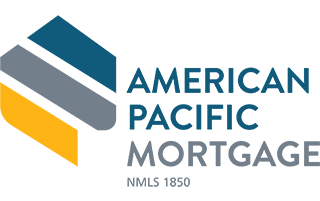The Housing Market Bubble Guide: What Are They & Should I be Concerned?
For anyone who had to live with the insanity of real estate in the 2000s and how it ended in 2009, the term “bubble” isn’t a figure of speech; it evokes a very real, tangible feeling of mayhem and economic ruin for many who were burned by the last 2009 Recession. A real estate bubble had been built up from 2005 to 2009, skyrocketing prices and valuations, generating billions in equity liquidation, and wreaking foreclosure havoc on communities when it all fell apart. Not surprisingly, those who experienced even a witness’ perspective immediately get apprehensive when the word “bubble” appears again in association with real estate. Here’s why.
What is a Housing Bubble?
A housing bubble is essentially a situation where home prices and sales listings tremendously outpace the actual value of the real estate. However, because everyone suddenly feels an urge to get into real estate or miss out on a home or an investment, the sales prices just keep being pushed higher and higher. At some point, risk overcomes the attraction of gain, and everyone starts to sell to avoid taking a loss. Those who sold probably just a few months before make huge gains, but the high majority get caught in a very rapid drop, ergo the bubble bursting. Real estate bubbles are essentially driven by an out-of-control mix of extraordinary demand, investment speculation running rampant, and lots of cash made available by easy credit.
How Long Can Housing Bubbles Last?
Real estate bubbles do have the ability to last for a couple of years, which is why they can be so dangerous. People think that since it was there last year, and this year, and seems to be climbing to a higher level next year, the bubble is still growing, so it’s okay to buy or invest. The 2000s bubble started roughly in the early 2000s and really picked up steam by 2005. Easy credit, low-interest rates for borrowing, and lots of investment cash pushed into mortgage securities based on those loans fueled the 2000s bubble. When someone fundamentally realized the mortgage securities were based on high-risk junk mortgage loans, the bottom fell out in 2009 and credit froze from panicked lenders. That, in turn, led to a crash and valuations dropping hard on homes until 2013. Normally, bankruptcies and loan delinquencies happen from labor problems and unemployment, but in 2009 it literally was a credit freeze that broke the market.
What Can Cause a Housing Bubble?
The big driver of bubbles tends to be high-risk investment speculation. Real estate has the power to create significant gains, much stronger and bigger than the stock market. As a result, investors see great opportunities and usually make big wins early on. This starts the cycle of pumping cash into the lending market which in turn creates more home loans. That starts driving more brokers to push securities based on mortgages, and higher-risk investors start coming in late. The issue compounds itself, and then at some point – just like the 1929 Stock Market Crash – the bottom falls out.
Low-Interest rates *
A key factor in borrowing, the vehicle by which a bubble sustains its growth, is the historically low-interest rates for home loans. Despite the 2009 Recession, home loan interest rates actually went even lower in recent years well after the crash. Rates are literally the gasoline and brakes that can drive hard or freeze a real estate market because it impacts the cost of loans. Low rates make borrowing cheap, far lower than any other form of home sale payment, and affordable for home buyers. High rates make loans expensive and generally cut people out of the market who can’t afford the monthly payment levels.
When it came to the 2009 Recession, adjustable-rate mortgages, or ARMs, were making large sums of loan cash available for buyers for as low as 1 percent for the first three or five years. Many assumed they could just sell the home in that time period, so the borrowing was cheap, especially if just paying on the interest. When the market fell apart in 2009, many lost their shirts unable to keep up with suddenly spiking home loan rates due to the fact that any ARM eventually resets to a higher interest rate, even higher than a traditional 30-year fixed mortgage.*
Loosening of Credit
Bubbles are driven by cash, so where credit gets loosened and becomes readily available, bubbles will happen with more and more buyers involved. Since 2009 credit requirements have been much tighter with a heavier level of documentation for both sales and refinancing. The easy lending that happened in the 2000s and opened up a lot of fraud is impossible today. That doesn’t mean that a bubble can’t occur; it just means that the easy cash availability – a major cause of the bubble – doesn’t exist as much today as it did a decade ago.
What Could Happen When the Bubble Pops?
When a real estate bubble falls apart mainly two things occur: the homes start dropping in value a lot faster than it took for the prices to go up. That’s usually due to widespread panic of everyone on the edge trying to sell quickly and get out of the market. Suddenly the massive supply hammers pricing way down in a few months’ time.
1. Asset Values Fall Faster Than They Rise
Homes don’t suddenly skyrocket in value in one month. A heavy pace is an annual increase of over 10 percent a year. For example, if a home sells for $200,000 and increases by 10 percent in three years, by the fourth year the same home is selling for $266,200 before the fourth year’s gain compounds. Even when one takes out the seller’s fee, one is still making a gain of almost $50,000 from the original purchase. Do that three or four times and it’s a hefty profit, but it still takes a few years to happen.
The drop in pricing is much faster, however. Pure panic can knock off $25,000 in valuation in the space of a week. Give it three months, and homes could lose as much as $100,000 in a rapidly deflating bubble. Sadly, many suffered miserably by 2010 and found themselves “underwater,” the term is given when a home value is less than what was borrowed to buy the home.
2. The Scramble to Sell
It’s inevitable the homes selling at the top of the market will end up representing a huge risk for investors. It takes a lot of money to finance such a purchase, and the cliff is steep if the market falls out from underneath. This typically causes a mad fear to unload a home, and to do so one usually has to discount the sale drastically to make it happen. That causes a cascade effect on other sales nearby which in turn can echo back to the first sale if it’s still being listed. The result is a vicious cycle that doesn’t stop until the buying starts to outpace the inventory. This is why many lenders and banks with foreclosures kept their inventory off the market so that the fall would stop and demand would increase again.
What Can Cause the Housing Bubble to Burst?
Again, the loss of widespread credit was a key factor in the collapse of the 2000s bubble and 2009 Recession beginning. But labor loss can be a huge driver as well. When people suddenly lose their paychecks by the thousands, it means that many homes with mortgages suddenly can’t be paid. That, in turn, affects lenders, local businesses, the community, and more. Everyone feels an economic downturn, so cities with big labor pools in one or two employers are far more at risk than those with diversified labor pools. The third issue that could slam the brakes on a bubble is if the Federal government steps in and suddenly spikes interest rates to slow down lending. That too will cut off demand, and sales prices will plummet quickly.
Should I Be Concerned About a Housing Market Bubble?
Nationally, the country in 2011, two years after the 2009 Recession start had single-digit figures for overvaluation with a whopping 94 percent of listings at value or below value. By the end of 2017, the national figures have changed to 33 percent overvalued, and 67 percent of homes listed at value or below value. Obviously, a lot has changed, but many experts do not see a hard bubble occurring yet.
There will be a correction, that’s a certainty. However, many loans today are based on solid income levels, good metrics, and tighter credit. That means the likelihood of foreclosures and bankruptcies in another drop is far less. That also means homes and impacted areas will retain more of their value, even when things slow down. Folks can pay their bills, hold onto their homes, and weather the dip. That will sustain higher valuations and less dramatic drops than what we saw in 2009.
– ©2018 American Pacific Mortgage Corporation. All information contained herein is for informational purposes only and, while every effort has been made to ensure accuracy, no guarantee is expressed or implied. Any programs shown do not demonstrate all options or pricing structures. Rates, terms, programs and underwriting policies subject to change without notice. This is not an offer to extend credit or a commitment to lend. All loans subject to underwriting approval. Some products may not be available in all states and restrictions apply. Equal Housing Opportunity.
The views, articles, postings, and other information listed on this website are personal and do not necessarily represent the opinion or the position of American Pacific Mortgage Corporation or US Lending Company.
* For loan examples and more information visit our disclosure page at https://www.uslendingcompany.com/disclosures/





